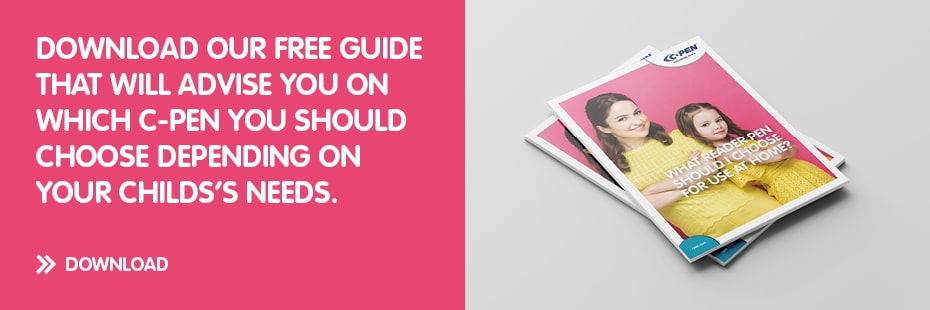
Why a reader pen can strengthen the ability to learn
It’s a proven fact that our ability to learn depends on more than one sense. For example, you can read a sentence multiple times and eventually learn it. But if you both read and hear it, the chances that you will remember it increases by 50%. Using both sound and vision is called multisensory learning and is a learning technique that fits well with a reader pen because it both highlights and pronounces words.
Multisensory learning encourages learners to use more than one of their senses when taking in new information. This learning style promotes using activities that appeal to our visual, auditory, kinaesthetic, and tactile senses. Multisensory learning is a prevalent teaching method for children with learning differences such as Dyslexia or ADHD or those with learning disabilities. It’s also a great way to ensure that teaching is inclusive, as it provides a variety of ways for children to access the learning and does not rely on just reading, writing, and listening alone.
Stronger literacy skills
Multisensory activities are based on whole-brain learning, which is the belief that the best way to teach concepts is by involving multiple areas in the brain. Students can develop vital literacy skills by adding auditory or visual components to reading assignments, like illustrations or online activities. Before students even enter elementary school, they’re already learning skills that will lead to reading readiness later. These foundational reading skills like print or letter recognition will prepare them to develop literacy as early as kindergarten or first grade. The earlier essential reading strategies for elementary studies are introduced into their curriculum, the stronger their long-term reading skills will become.
We remember what we read and hear
Literacy is an inherently multisensory skill that benefits from differentiated reading instructions, and this is because reading involves both recognizing written words and translating them into their corresponding letter sounds. For struggling students or those with reading disabilities, particularly dyslexia, multisensory learning can help them learn to use all their senses while reading a book and rely on their strengths. So, whether using a reader pen for classroom instruction or home assignments, multisensory learning can help all students develop or strengthen their literacy skills. For example, people remember 10% of what they read, 20% of what they hear, 30% of what they see, and 50% of what they hear and see.
Using the reader pen as a highlighter
Using selective highlighting and underlining helps students organize what they have read by selecting what is essential. This strategy teaches students to highlight or underline only the keywords, phrases, vocabulary, and ideas central to understanding the reading.
It is a flexible strategy that may be tailored to fit various types of information and different skill levels. You can employ selective highlighting for various instructional purposes (i.e., essential vocabulary; main ideas). You can also integrate this strategy with assistive technology such as reader pens. Then the highlighted words or sentences also can be transferred to a computer or a smartphone for further practice or editing. While studying, selective highlighting helps students learn to pay attention to the essential information within a text.


